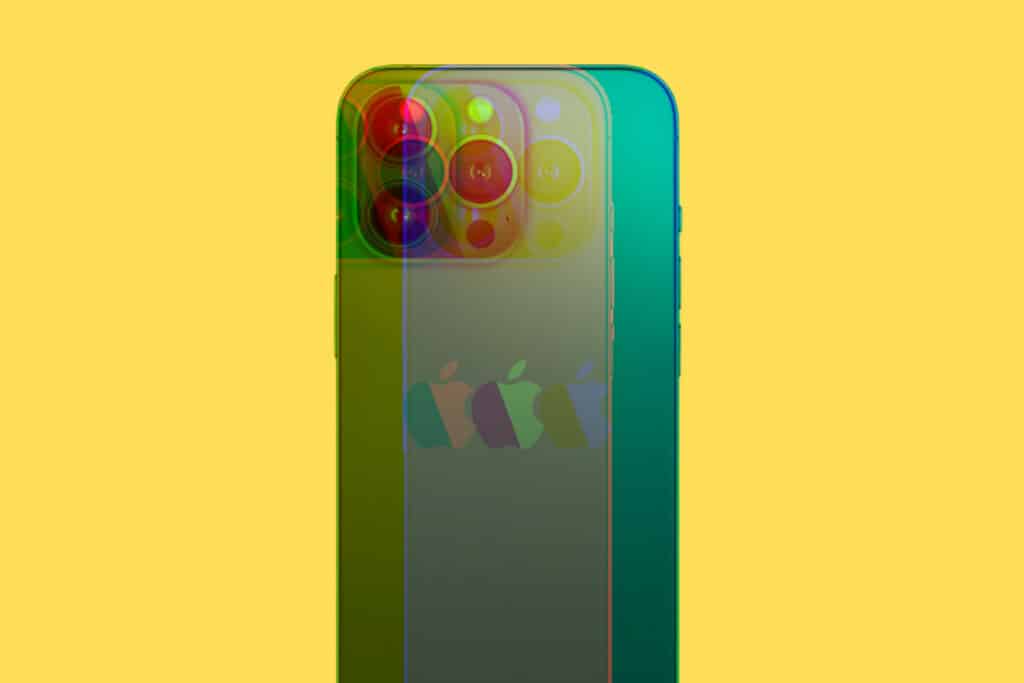With prices ranging from $1200 to $200 for a new phone, there has never been more disparity in price. But how much should you really spend on a new phone? Let’s find out…
Not so long ago, the most expensive phone you could buy was an iPhone. Android phones were cheaper and offered a wider range of choice. The second part of that sentence still stands, but iPhones are no longer the most expensive options – things have changed dramatically since those days with the advent of foldable phones and ultra-high-end Androids.
Apple’s iPhones are still pricey, however, but you now have three potential options: the base model (a la the iPhone 13), the Pro and the flagship Pro Max. This means you have three potential price points when buying an iPhone – expensive, more expensive, and very expensive. And Samsung does much the same thing with its Galaxy S phones, with its standard model, Plus model, and Ultra model.
With cheaper phones, you have even more options with brands like Motorola, Samsung, RealMe, OPPO, OnePlus, and even Google and Apple to a certain extent (the Pixel 6a and iPhone SE 3 are relatively mid-range in their pricing). But when it comes to buying a new phone, where exactly is the sweet spot with respect to price vs performance and features? If you want things like a high-end camera system with all the bells and whistles, you’re going to have to pay for it effectively.

Indeed, camera modules are the number one way that phone brands like Apple and Samsung differentiate their respective flagship models from their base models. The iPhone 13 Pro Max, for instance, has the most advanced camera module; it has LiDAR and more features than the base model iPhone 13. Ditto the Galaxy S22 Ultra versus the Galaxy S22. If you’re not fussed about this kind thing, however, you stand to make quite a considerable saving on your next phone.
But what is the difference between, say, a $200 phone and a $1200 phone? What are you paying more for exactly? And how low can you afford to go with your next phone without sacrificing too much performance and overall usability? To answer this question, let’s take a look at the most common price brackets for phones – from $200 and under to over $1000 – to find out…
$200 – $300: The Budget Phone Segment
If you go below $300 for your next phone, you’re very much in the budget segment of the market. You can pick up phones for less than $100, of course, but these are feature phones and are designed for elders and kids predominantly – or those that want to live off the grid. An example of this would be the Nokia 3310 – it’s as basic as it gets with respect to features and it retails for less than $100.
With smartphones, you’ll get plenty of functionality in the $200 to $300 price bracket. Things like 4G, full HD displays, triple lens camera modules, and decent battery life are all pretty much guaranteed in most cases. But all of the main features – including the CPU and the camera module – will be entry-level components. This means they lack the performance and capabilities you’ll find on more expensive models.
You’ll also struggle to get an iPhone at this price point, unless you go the
$300 – $500: The Flagship-Lite Segment
Once you break the $300 mark and start heading up towards $500, things open up massively with respect to performance, features, and overall capabilities. At the low end, you’ll be looking at a phone with 5G, 128GB of storage, a 1080p display with 90Hz refresh rate, 15W-45W wireless charging, and fairly large batteries – around 5000mAh in most cases.
If you’re in the US, this is the trickiest of all price brackets because the VAST majority of phones in this price section are made by Chinese brands like Xiaomi, RealMe, OnePlus, and VIVO – and you cannot buy these phones in the US for love nor money. If you’re in the UK or Europe, you can fill your boots – these brands are readily available everywhere.
The overall design and finish of phones, meaning how they look, what they’re made of, and their overall industrial design, really starts to improve in and around the $400 to $500 mark. You’ll be getting an attractive, well-built phone with great specs and hardware the closer you get to $500. Phones like the Samsung Galaxy A53 and Moto G Stylus (2022) are two great examples of quality phones you can pick up for less than $500 – both have 5G and plenty of performance under the hood.
At this price point, you’ll be getting solid performance, wireless charging, decent camera modules, and solid battery life. If you can push it closer to $500, you’re going to get the most bang for your buck. Right now, I’d say the Samsung Galaxy A53 is just about the best option in this hugely competitive market segment, so if you’re after a phone that does it all for not too much money that’d be the one to go for.
$500 – $700: Big Specs, High-End Features & Design
Once you break the $500 mark, things escalate again. You’ll get things like QHD displays, higher storage options, huge amounts of RAM, and more powerful CPUs which make the phone run faster and open up new possibilities for gaming, productivity, imaging, and photography.
Phones in this neck of the woods could be considered flagships, in a way. They have all the power and features you’d expect from a flagship phone, but they lack certain things, stuff that is reserved for the most expensive models – stuff like Apple’s LiDAR sensor for instance. Or, it could be that they run the second most powerful CPU option in a range.
Either way, at this price point you’re getting a massively powerful phone that’ll have all the performance 99.9% of people will need. You’ll generally get excellent camera performance, support for things like 4K video recording, 5G as standard, and higher resolutions and higher refresh rates on the displays. You’ll also get better quality panels too, usually AMOLED instead of IPS – and this is a good thing.
If the idea of spending over $1000 on a phone makes you feel ill, but you want a solid performer, this is the price bracket you need to be looking at. You’ll essentially get a flagship phone in all but name. It will come with all the bells and whistles you need, just at a lower price than a proper flagship. Good examples of phones in this price niche would be the Pixel 6, Galaxy S22, and the iPhone 13.
$700 – $1200: The Flagship Zone
This is where things start to get really expensive. Once you break the $1000 mark, you’re getting access to the most advanced features, the best quality components, the best performance, and the most advanced camera modules. Popular phones in this price bracket include the iPhone 13 Pro Max and the Galaxy S22 Ultra, and these are essentially the two best phones you can right now.
Do you need a phone this powerful? I’d argue, no, you don’t. I use the standard iPhone 13 and it is perfectly fine for my needs. But that’s me; if you want and/or like to have the best of the best when it comes to phones, you’ll need to spend that extra money to break the $1000 mark. This will get you access to things like 1TB of storage, highly advanced sensors like Apple’s LiDAR, and the best quality screens on the market.
Again, the two best options at this price point are Apple’s iPhone 13 Pro Max and Samsung’s Galaxy S22 Ultra. If you want to buy a flagship right now, these are the only two phones you should be looking at – both models are outstanding, get excellent support, and are immensely powerful in every measurable aspect, from performance benchmarks to camera abilities and quality.
$1200 – $2000: The Bleeding-Edge Zone
This segment is the highest of the high-end. Once you break the $1200 mark, you’re entering a very, very niche segment of the market. If you need 1TB of storage, you’ll find it as standard at this price point. Foldable phones, namely Samsung’s which are the only real mass market options at the moment, exist here. Fittingly, this is the segment of the market with the fewest amount of sales per year.

If you want a foldable Samsung phone, you’ll be paying north of $1200. Or, if you want a 1TB iPhone 13 Pro Max. Again, this price point is definitely not for everyone. This segment is specifically aimed at early adopters (those that desire new and novel things and don’t mind paying for them) and professional users that want to maybe switch out their DSLR for a phone. Is it for everybody? Hell no. But if you’re a professional user, this is where you’ll likely do most of your shopping.
Finding Value For Money
If you’re in the market for a new phone and you live in the USA or the UK/Europe, you have loads of options. But finding the best possible value for money can be tricky – you need to think about things like software updates, overall support, as well as how long you plan on running the phone. Apple and Samsung offer the best support on the market right now with respect to software and security updates.
But it is Apple that leads the market with respect to overall support; its iPhones get, on average, around 7 years’ worth of iOS updates and security patches. With Samsung, you get three major Android updates and four years of security patches. If you only plan on running your phone for three years, this isn’t a problem. But if you want to run it for longer, you’ll definitely want to think about getting an iPhone.
For me, value for money, when buying a phone, is a simple equation that looks something like this: how long the phone lasts (support) + performance (inc. battery life and camera) = perceived value. If your new phone is either the Galaxy S22 or the iPhone 13, both base models, you’ll pay around $700 for the phone and they’ll run seamlessly for the next several years. In my book, this means they’re good value.

If you use a cheaper phone, say, something that’s less than $400, you might not get the same level of support which will mean you might have to upgrade it sooner than if you bought a slightly more expensive model. Cheaper phones also run cheaper components which are more prone to issues and/or faults. Again, this is something to keep in mind: no one likes having to buy something twice, after all.
Ultra cheap phones might seem appealing initially, but when you consider that they use cheaper components, are more prone to issues, and do not get the same level of support from the manufacturer, it can quickly create diseconomies of scale, whereby you buy it for not much money but then it breaks after 12 months and you have to buy another one – cheap phones always seem to just outlast their warranties as well.
If you’d gone with a more expensive model from a better brand, like the iPhone 13 or Galaxy S22, you wouldn’t have experienced these issues. And when you buy two cheap phones in the space of 24 months, you’ve spent the same amount of money you would have spent had you got a reliable $700 phone in the first place. That’s not to say ALL cheaper phones are rubbish. They’re not. But reliability is an issue at the lower end of the market.
Right now, I think the two best-value phones on the market are Apple’s iPhone 13 and Google’s Pixel 6. I also really like the Samsung Galaxy S22 too. You really cannot go wrong with any of these phones; they all have plenty of performance, excellent software, amazing cameras, and solid battery life. You literally could not want more from a phone, and at less than $700 in most cases, they’re still pretty accessible for most users.
Buy Outright, Finance, or Contract – What’s The Best Way To Buy A Phone?
If you know the phone you want, the next question is how do you actually buy it? Obviously, the best way to buy a new phone is to buy it outright, using cash. But not all of us – especially in 2022’s inflationary times – are exactly flush with cash, so what’s the best way to buy a phone? I like finance; Apple and Samsung both offer 0% finance, so you can buy a new phone outright and spread the cost over two years.
The upshot of buying a phone outright, direct from a retailer or manufacturer, is that you own the phone outright and are not tied to a carrier and/or phone network. You can then shop around for the best data plan, saving yourself potentially hundreds of dollars a year. SIM-only plans are ALWAYS cheaper than plans that come with phones. For instance, you can get unlimited data with Mint Mobile for just $15 a month.
If you bought the iPhone 13, for instance, on finance from Apple, you’ll probably end up paying around $33 a month for 24 months. With Mint Mobile’s data plan, your monthly outgoing for ALL your phone’s costs is $48 a month. That’s not much to run an iPhone 13 with unlimited data at all; most people could easily handle that cost. If you have adequate to decent cash flow, this is by far the best way to buy a new phone.
Personally, I would always avoid contracts and/or phone plans where possible. All the big phone retailers – like Apple and Samsung – offer decent finance options, so you can spread the cost over 24 or 48 months. You’re then free to shop around for the best value data plan. If you go the contract or phone plan route, you just end up paying way more – and you really don’t need to, so don’t do it!
New or Refurbished?
If you’re looking to save money on your next phone, and you want to do the environment a solid, you could opt to get a refurbished phone instead of a new phone. We have a complete guide to buying refurbished phones which covers everything you need to know about getting one and how they compare to new phones. Spoiler: in most cases, they look and function as good as new but cost, on average, 40% less.
If you want an iPhone but you’re on a tight budget, buying a
A new phone will always be preferable, of course. You’ll be the first person to use it, it will be free from any cosmetic issues (scratches and bumps), and it will come with its official case and accessories. I have used plenty of refurbished iPhones over the years, however, and they’ve always been brilliant. I only tend to use refurbished iPhones too, and the reason is simple: Apple’s support is vastly superior, so you can buy quite old – like the iPhone XS Max – and rest assured it’ll get iOS updates for years to come. This just isn’t the case with Android phones, sadly.
Wrapping Up…
I think we’ve covered pretty much everything there is to know about buying a new phone. We’ve looked at all the potential price points, and explored what you get in each of them; we’ve explored the different ways to buy a phone, using things like financing; and we’ve discussed the difference between buying a new phone and a refurbished phone. You should now have a fairly good idea about what to do next.
If you want my advice, as a professional tech journalist, I would advise that you go with any of the following phones:
- iPhone 13
- iPhone 13 Pro Max
- Samsung Galaxy S22 Ultra
- Samsung Galaxy S22
- Google Pixel 6
- Samsung Galaxy A53
All of these phones offer the best overall features, performance, and value for money. They all range in price from less than $400 to over $1000 in the case of the iPhone 13 Pro Max and Galaxy S22 Ultra. The iPhone 13, Pixel 6, and Galaxy S22 deliver the absolute best value for money right now, though, so if that’s what you’re after go with one of them.
Me? I use an iPhone 13 simply because it is a great phone that isn’t too expensive, it has a decent camera, excellent battery life, and it will get support from Apple for at least the next 7-8 years. This is why iPhones tend to hold their value more than similarly priced Android phones. I do really like the Pixel 6 and Galaxy S22 though, so if you’re more of an Android kinda guy or gal, those would be the ones I’d be looking at…


